Sovereign Asian Art Prize

In seven short years the Sovereign Asian Art Prize has become one of the most prestigious celebrations of emerging artistic talent across the continent. Quite apart from the $25,000 prize for the winner, the exhibition of the thirty finalists is a crucial platform for the next generation to gain exposure and publicity in an industry where the clamour and cash is reserved for those at the top.
Surveying art from across a continent is no easy feat and given the growing power of the prize this year the Sovereign Art Foundation enlisted the help of specialists from each country in Asia to nominate up to 5 candidates from their territory. A panel of judges including Chinese artist, Xu Bing, Fumio Nanjo, Director the Mori Art Museum and curator David Elliott then whittled the entrants down to 30 finalists.
The exhibition of all 30 finalists opens at The Rotunda, Exchange Square in Hong Kong on January 18th, when the winner chosen the judges will be announced. The winning artwork becomes the property of the Sovereign Art Foundation and Sotheby’s will auction the remaining 29 at a gala dinner on 27th at the Four Seasons in Hong Kong, with half the proceeds from each sale going to the Foundation and half to the artist.
The philanthropy doesn't end here either. In addition to the overall prize and auction we the public can cast our eye over the 30 finalists and vote for a favourite via the Sovereign Art Foundation’s website and the winner will receive an extra $1000. Later in the month we’ll be bringing you news of the winners and the interviews with each of the judges. In the meantime, get voting.
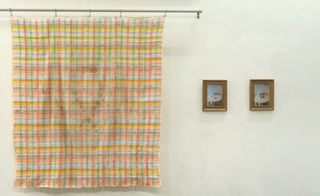
Hand-Painted Cloth Used as Tablecloth by Kit Lee, Hong Kong.
"I painted some cloth by hand and used them in different daily occasions. I washed them sometimes. This one, I used it as a tablecloth for a year in my studio where I live. The work is about an individual's presence in daily life."

Seated Three Graces by Debbie Han, Korea.
"I have been deeply drawn to the issue of how human experiences are defined in contemporary culture. The 'Graces' series challenges the Eurocentric standard of beauty by photographing bodies of actual, present-day Asian women and combining them with prototypical western classical heads."
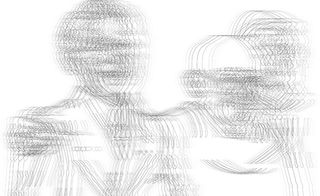
No Country for Old Men by Raju G.C, Pakistan.
"The work contains the portraits of Mahatma Gandhi and Mohammed Ali Zinnah or Quid-a-Azam, the founder of Pakistan. The work was conceived from a historical portrait photograph, which showed the two icons posing after a talk in 1944."
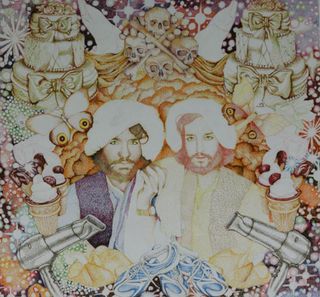
Get out of my Dreams 5 by Faiza Butt, Pakistan.
"I chanced upon this photograph of Afghan men and was taken by the romance and ethereality of the image. The 'hyper-masculinity' of my drawing is unsettled by portraying these men as a couple, engaged in domestic chores and exposed as wounded individuals."
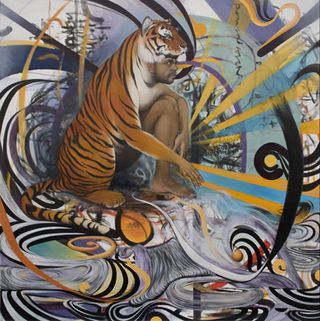
Sha-Boy by Miguel Payano, China.
"The junction of Shaman and fool, the term Sha-boy derives its meaning from the following quote: '(The Great Khan) said, 'It is all useless, if the last landing place can only be the infernal city, and it is there that, in ever-narrowing circles, the current is drawing us.'"

The Wedding by Kok Hooi Chan, Malaysia.
"This painting of a photograph I have reinterpreted, pays homage to the traditions of marriage, ceremony and family constructs - it honours the fact that regardless of culture, space and time remain of immeasurable and constant value."

Framing Device #1 by Francis Ng, Singapore.
"This selective composition I have produced seems to hide more than it reveals, covering more than it uncovers, and one is left wondering what is beyond that which can be seen, and beyond the given perspective."
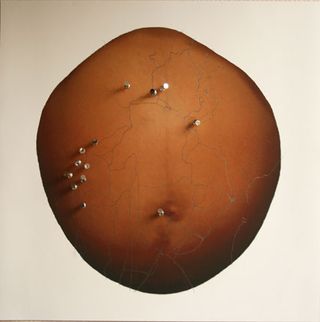
Sohni Dharti...(My Motherland...) by Farida Batool Syeda, Pakistan.
"This pregnant belly with maps of cities drawn over it, mirrors the military operation against the war on terrorism. This mapping on the body is an artistic reflection on the millions displaced and thousands killed."

Untitled (I have felt this coming for a long time) by Viet Le, Cambodia.
"This image is taken of my mother in the kitchen window during my father's long illness. She is represented as a ghostly figure. What happens when dominant narratives and personal myths prove to be bankrupt?"
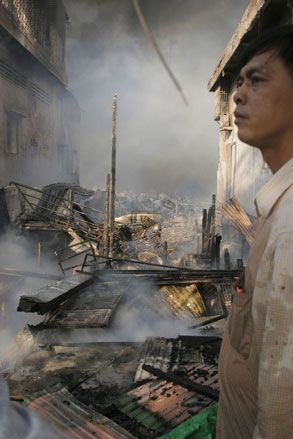
Fire of the Year by Vandy Rattana, Cambodia.
"In Fire of the Year 2008, photographer Vandy Rattana tells a hopeless story, common in today's Cambodia. With few fire trucks to call on and bribes required for protection, Rattana distils moments of both chaos and desperation."
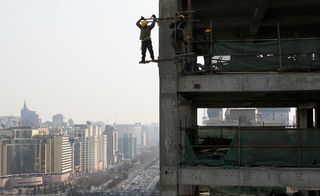
No Fear by Ben McMillan, China.
When I came to Beijing I was constantly amazed by the army of migrant workers performing incredible feats to build a city they can hardly share in themselves. This shot shows how removed they are from mainstream city life - high up in the wind and winter cold, these people make Modern China."
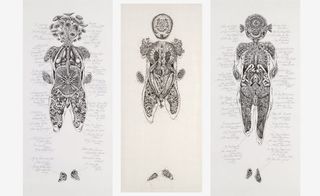
Homunculus - Exhibit H, I, J by Angela Su, Hong Kong.
"A homunculus is an artificial human being 'created' by the 15th century alchemist Paracelsus. The recipe consisted of a bag of bones, sperm and skin fragments - a symbol which now signifies the concept of a cloned human being. The three homunculi presented in my triptych reintegrate science and visual art, to create images that challenge our perception of the ecological and evolutionary system."

Liangmahe #8 by Oak Taylor-Smith, China.
Over the past few years I have been recording unique abstract images - such as these illegal graffiti adverts - that decorate the urban texture of Beijing, a city in a state of flux."

Untitled by Riem Em, Cambodia.
"My paintings have the value of headstones, produced to commemorate the memory of the thousands of disappeared persons: those innocents tortured and executed by the Khmer Rouge."
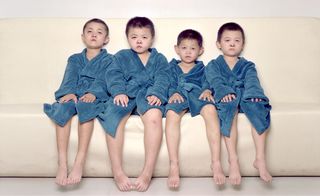
Temporary Actors - Fairy Tales for Children No.01 by Wei Zhang, China
"In a world changing at such high speed, anyone can be turned into a temporary figurehead, or an actor. For this photograph I disregarded the innocence of the children in order to capture a truth, or a fable to reality."
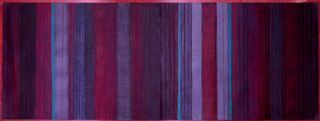
25 Hours No.2 by Cristene Hoei Chang, Singapore.
"My materials are ordinary and common. String, rope and twines that arrive with postal parcels, envelopes, supermarket cartons and take-away food boxes. I like their ordinariness, as these materials act as evidence of our interactions with everyday life."

A Capitalist Hit by Sajjad Ahmed, Pakistan.
"My reference to the auction of (communist) Mao's portrait by Andy Warhol - an iconic work of art sold for a huge price - pays testament to the latest custom of treating art like a utilitarian object, or a means of investment. Which, in turn, connects to my interest in the decline of images in a world contaminated with words."
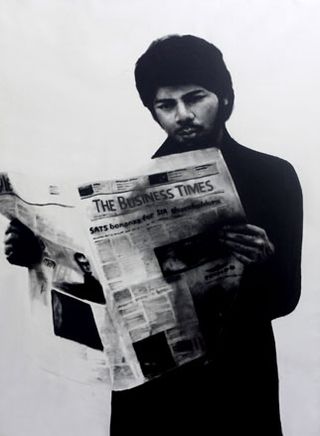
Reading Art Critic on Newspaper by Ariadhitya Pramuhendra, Indonesia.
"Becoming an artist in a Third World country such as Indonesia, I keep questioning the relevance of the museum, and its credibility as a parameter of artistic growth. I believe that growth in art should happen not only in the western world, but also in Third World countries. I wonder where I stand within the art world. Who am I?"
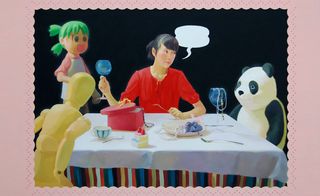
Dinner by Yanuan Hou, China.
"The propagation of visual culture is beginning to affect the world deeply. Images have lost their power and relevance. As such, I am interested in creating a new visual experience - not through the denial of tradition, but rather through the retouching of it."

What Are They Talking by Wai Hong Mok, Hong Kong.
"In this work I wanted to record photojournalistic attention on the Beijing Olympic Games, and in turn express the attention these photojournalists brought upon China from the rest of the world."

The Adorable Gangsta by Nano Warsono, Indonesia.
"So many global corporations have come and sapped third world countries for their resources. These corporations have such nice, acceptable facades, but beneath the surface, they are merely gangsters with logos splashed all over their clothes."
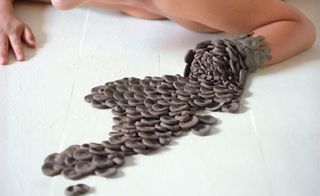
Tsuchitarashi by Noriko Yamaguchi, Japan
"Meaning 'the princess of soil', Tsuchitarashi is a character in commune with the dead."
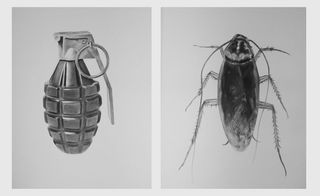
Untitled (Diptych) by Ayaz Jokhio, Pakistan.
"This piece, from a series of diptychs, is my idea of visual poetry. It borrows heavily from the poetic practice of creating metaphors. The act of placing these two images in a diptych is the act of creating a visual metaphor"
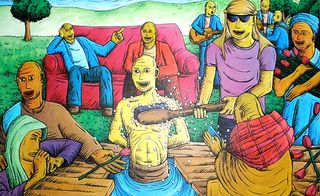
Be Honest even Worse by Popok, Indonesia.
In my paintings I try to reflect on the notion that being honest in life is difficult and that honesty is the virtue we should always strive for when we 'do' and 'act', in this sense I try to see my paintings as artistic fables."

Aqueous by Mark Mawson, Australia.
"The concept and vision behind Aqueous was to create organic forms by dropping paint in water. It was to create forms which could be interpreted by the viewer as different forms of life from a far off world."
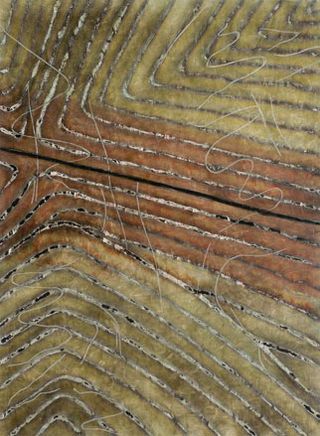
Paddock, Just on Dusk by Wendy Teakel, Australia.
"Wendy works across the disciplines of sculpture, drawing and painting to create artworks that explore the nature of place within the cultural landscape of farms."
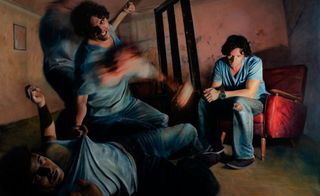
Menacing Me by Vincent Fantauzzo, Australia.
"Whenever we create, we struggle. What is creation without struggle? We struggle against ourselves, against the past and against the limits of our cognitive horizons."
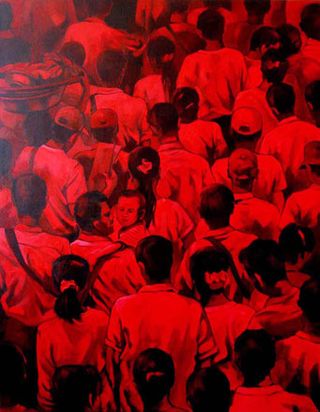
Crowdscape (2) by Khin Zaw Latt, Myanmar.
"I was very affected by the sight of crowds of local people, getting on the ferry to cross the river here in Yangon. I could feel the hardship and struggle of everyday life, but also how they just got on with it. I wanted to express in my paintings both emotions - the uncomfortable pressure of the crowd, but also the individual beauty that sparkles through the ordinary."
Wallpaper* Newsletter
Receive our daily digest of inspiration, escapism and design stories from around the world direct to your inbox
-
 Frank Stephenson’s high-flying capsule design for HALO’s balloon-powered space flights
Frank Stephenson’s high-flying capsule design for HALO’s balloon-powered space flightsSpace start-up HALO promises zero-emission travel to the stratosphere in a futuristic viewing capsule shaped by Frank Stephenson Design
By Jonathan Bell Published
-
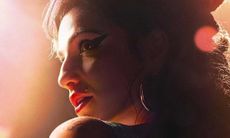 Back to Black: all eyes on film-maker Sam Taylor-Johnson
Back to Black: all eyes on film-maker Sam Taylor-JohnsonBack to Black cinematographer Polly Morgan tells Wallpaper* how a shared love of French New Wave close-ups brought Sam Taylor-Johnson’s Amy Winehouse biopic to life
By Craig McLean Published
-
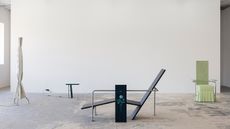 Formafantasma’s new collection explores nostalgia and the queer identity
Formafantasma’s new collection explores nostalgia and the queer identityFormafantasma present 'La Casa Dentro' at Fondazione ICA Milano (until 19 July 2024), where they draw inspiration from the domestic sphere and their own nostalgic perceptions of home
By Laura May Todd Published